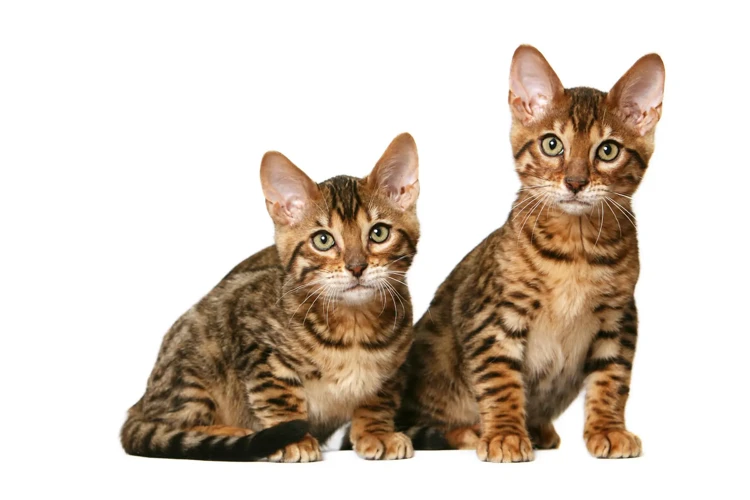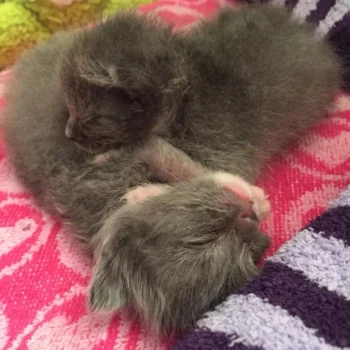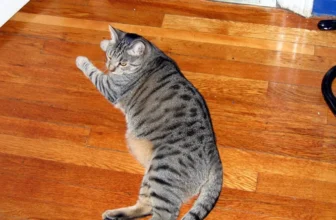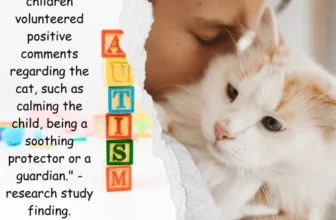As a pet owner, you may be contemplating the idea of introducing a California Spangled cat to your household of feathered friends. While many people believe that cats and birds cannot coexist peacefully, it is possible to foster compatibility between them by understanding the behavior of your pets and using some simple tips and techniques. In this article, we will explore the best ways to integrate California Spangled cats and birds, common problems that may arise, and practical solutions for a happy and harmonious household. So, let’s dive in!
Understanding your California Spangled Cat and Birds

Understanding the compatibility between California Spangled Cats and birds is crucial for the well-being of both pets. While these two species can coexist harmoniously, their relationship requires careful nurturing and management. California Spangled Cats have unique behavioral characteristics that must be considered when introducing them to birds. Early socialization also plays an essential role in the success of their relationship. In this section, we will delve into the behavioral characteristics of California Spangled Cats and the importance of early socialization in fostering compatibility with birds. Let’s explore the intricacies of their relationship and how you can help them coexist peacefully. For more information on introducing California Spangled Cats to other pets, check out our guide on introducing them to dogs.
Behavioral Characteristics
Understanding the behavioral characteristics of your California Spangled Cat and Birds is key to creating a compatible living environment for them.
Cats: California Spangled Cats are known for being highly intelligent, active, and playful. They have a natural hunting instinct, which can make the introduction to birds challenging. Additionally, they are territorial creatures and may not take kindly to other animals in their space. However, with proper socialization and training, they can learn to coexist peacefully with birds.
Birds: Birds are naturally skittish creatures and can become stressed in the presence of predators. They are also highly territorial and may not appreciate the presence of a new animal in their space. However, birds are intelligent creatures and can learn to differentiate between predators and other animals.
To promote coexistence, it’s important to understand the behavior patterns of both species and create a living environment that takes these patterns into account.
| California Spangled Cats | Birds |
|---|---|
| Highly intelligent | Naturally skittish |
| Active and playful | Highly territorial |
| Natural hunting instinct | Can become stressed in the presence of predators |
| Territorial creatures | Intelligent creatures that can learn |
By understanding the behavioral characteristics of your California Spangled Cat and Birds, you can take steps towards fostering a compatible living environment for them. For more information on how to introduce pets to your new California Spangled Cat, read our article on introducing pets to your new California Spangled Cat. To learn more about the compatibility of California Spangled Cats with other small animals, read our article on California Spangled Cat compatibility and how these cats can coexist with small animals.
The Importance of Early Socialization
Early socialization is crucial in fostering compatibility between California Spangled cats and birds. Socialization refers to learning and getting accustomed to different environments, people, and animals. During early socialization, your cat can learn to coexist with birds peacefully.
Socialization is most effective when your California Spangled cat is still a kitten. During this stage, their brains are still developing and they are more receptive to new experiences. Early exposure to birds will help your cat learn that the birds are not prey, but rather just another animal coexisting in the same environment.
Proper socialization will help manage aggressive and territorial behavior in cats towards birds. California Spangled cats can become territorial, and their prey drive toward smaller animals like birds can be triggered if they are unfamiliar with them. However, if they are socialized early, they are much more likely to coexist with birds peacefully.
To socialize your cat, it is important to provide positive experiences with birds through visual and scent exposure. For instance, you can introduce them to the sights, smells, and sounds of birds and their environment. You can also use cat toys and petting to help create a positive association with birds.
Additionally, positive reinforcement is crucial in socializing your cat. If your cat shows calm and non-aggressive behavior toward birds, rewards can be given. For example, treats or praise can be good positive reinforcement.
Socialization plays an essential role in ensuring that California Spangled cats and birds can coexist peacefully in the same household. If you are bringing a new California Spangled cat into a home with birds, it is important to prioritize socialization from an early age. By doing so, you can help to minimize the likelihood of negative behavior and foster a healthy and happy environment for both your cat and your birds.
You can learn more about how to help your California Spangled cat coexist with other small animals by reading our article “How to Help Your California Spangled Cat Coexist with Small Animals”.
Tips for Fostering Compatibility

Building a harmonious relationship between your California Spangled cat and birds requires some effort. However, with patience and commitment, it is possible to make them compatible. To help foster compatibility, we have compiled a list of tips that can aid in creating a peaceful coexistence between your cat and your feathered friend. These practices will reduce the risk of aggressive behavior, injury or even worse, death. Follow the suggestions outlined below, and you will be successful in promoting a peaceful household.
1. Start Slow
When introducing a California Spangled Cat to birds, it’s important to start slow to ensure compatibility. This means taking the time to familiarize your cat with the presence of birds and allowing them to adjust to each other’s presence over time. Here are some tips on how to start slow:
| Tip | Explanation |
|---|---|
| Keep Your Cat on a Leash | Keeping your cat on a leash when introducing them to birds will help you control their movements and keep them from chasing or harming the birds. |
| Allow for Smelling | Cats have a keen sense of smell and will use it to familiarize themselves with the presence of birds. Allow your cat to sniff around the bird’s area and vice versa. |
| Maintain Distance | Make sure there is a safe distance between your cat and birds. Initially, keep them separated by a gate or screen door so they can see each other but not make physical contact. This will allow them to get used to each other’s presence without the risk of harm. |
| Use Positive Reinforcement | Encourage positive behavior in your cat by rewarding them with treats or praise when they remain calm and relaxed around the birds. |
| Gradually Increase Exposure Time | Do not rush the process. Gradually increase the amount of time your cat and birds spend together while monitoring their behavior closely until you are comfortable that they can coexist peacefully. |
Starting slow is crucial when it comes to introducing California Spangled Cats to birds. By following these tips, you can promote positive interactions between your cat and birds and ensure their compatibility. Remember to always supervise interactions and never leave your cat alone with the birds until you are confident that they can coexist peacefully.
2. Provide Separate Spaces
Ensuring that your California Spangled cat and your birds have their own separate living spaces is an important step towards fostering compatibility between the two. Here are some tips on how to provide separate spaces for your pets:
- Create a designated bird area: This can be a birdcage or a separate room where your birds can fly around freely and feel safe. Ensure that the space is big enough for your birds to move around comfortably.
- Provide a separate feeding area: Cats are natural predators and may view birds as prey, so it is important to establish separate places for feeding. Keep the bird food and water dishes out of reach of your cat to avoid temptation.
- Keep litter boxes away: Keep your cat’s litter box separate from the bird area. The scent of cat litter may stress out your birds and cause them to become anxious.
- Establish a safe space for your cat: Your cat should have a separate area where they can relax and feel comfortable. This could be a cat tree, bed, or a designated room.
By providing separate spaces for your pets, you are reducing the likelihood of conflict and making it easier for your cat and birds to coexist peacefully. Remember to supervise any interactions between your pets and always prioritize their safety.
3. Supervise Interactions
It’s essential to supervise interactions between your California Spangled cat and birds to ensure their safety and well-being. Even if your cat has shown no aggressive behavior towards birds, it’s always better to err on the side of caution.
Here are some steps to follow while supervising these interactions:
- Keep a watchful eye: Always keep a watchful eye on your cat and bird’s interactions. Never leave them alone, especially if they are still getting used to each other’s presence.
- Use positive reinforcement: Reward your cat with praises and treats for good behavior around birds.
- Separate them if necessary: If your cat shows any signs of aggression or hunting behavior, quickly separate them from the birds. Give them some alone time, and try reintroducing them later under stricter supervision.
- Don’t force interactions: If your cat is not interested in the birds, don’t force them to interact. Let them adjust to each other’s presence gradually.
- Learn to read body language: Learn to read your cat’s body language and behavior around birds. If your cat is showing signs of aggression or stress, remove them from the situation.
Following these steps will help ensure that your California Spangled cat and birds can coexist peacefully, and you’ll be able to enjoy watching them interact without worrying about their safety.
4. Use Distractions
When introducing your California spangled cat to birds, it is important to have a plan in place. Using distractions can be a useful tool to keep your cat’s attention away from the birds. Here are some distraction techniques that you can try:
| Distraction Technique | Description |
| Interactive toys | Provide your cat with interactive toys such as puzzle feeders, treat mazes, or wand toys to keep them occupied and away from the birds. |
| Scratch posts | Scratch posts and pads can be a great way to redirect your cat’s natural instinct to scratch. This will give them something to focus on, instead of the birds. |
| Environmental enrichment | Provide your cat with plenty of environmental enrichment. This can include cat trees, window perches, and other climbing structures to keep them occupied and entertained. |
| Music or TV | Playing music or having the TV on can help distract your cat from the birds. This can create a background noise that will provide a sense of security for your cat, keeping them calm and relaxed. |
It is important to remember that distractions should never be used to replace supervision. You should always be present when your cat and birds are in the same room together. Additionally, make sure that the distractions you choose are appropriate for your cat’s individual personality and interests. By using distractions, you can help keep your California spangled cat entertained and happy, and prevent them from becoming fixated on the birds.
5. Positive Reinforcement
Positive reinforcement is a great way to foster compatibility between California Spangled Cats and Birds. It’s important to reward your cat when they exhibit positive behavior around birds to encourage them to continue that behavior in the future. Here are some tips for using positive reinforcement effectively:
| Tip | Explanation |
|---|---|
| 1. Use Treats: | Offering your cat a treat when they display positive behavior such as peaceful coexistence with birds can help them learn to associate good things with being around their feathered friends. Make sure to choose healthy treats that your cat enjoys. |
| 2. Verbal Praise: | Cats love attention and praise from their human companions. When your cat behaves well around birds, use a cheerful voice to encourage good behavior and shower them with verbal praise. |
| 3. Playtime: | Cats love to play, so consider using playtime as a positive reinforcement tool. Set aside dedicated time to play with your cat using toys they enjoy, such as feather wands or balls. When they exhibit positive behavior around birds, reward them with a play session. |
| 4. Positive Association: | Create a positive association between your cat and birds by letting them observe birds from a safe distance. You can use a bird feeder or a birdhouse outside a window and let your cat watch the birds from the inside. Provide your cat with treats or positive reinforcement while doing so to build a positive association. |
| 5. Consistency: | Consistency is key when it comes to positive reinforcement. Make sure that everyone in your household is using the same techniques to reward your cat for good behavior around birds. This way, your cat will learn and associate the desired behavior with positive outcomes, regardless of who is around them. |
Remember, cats respond well to positive reinforcement and it can be a useful tool in fostering compatibility between them and our feathered friends. With patience and consistency, you can help your California Spangled Cat and Birds get along famously.
6. Train Your Cat to Respond to Commands
As a part of fostering compatibility between your California Spangled Cat and birds, it is important to train your cat to respond to commands. This will not only help prevent any potential issues but also make it easier to manage your cat around birds.
Training Tips:
| Commands | Training Methods |
| Leave It | This command is essential, especially when you want to bring your bird around your cat. Begin by placing a treat or toy several feet away from your cat. When the cat approaches the item, use the “leave it” command and reward the cat when he or she backs away. |
| Stay | You can start by having your cat sit, then hold out your hand, and say “stay.” Gradually increase the distance between you and your cat, use treats as a reward initially, and praise your cat when he or she successfully obeys this command. |
| Come | Teach your cat to come when called. Start with small distances and use rewards when your cat responds positively. Gradually increase the distance, and soon, your cat will come when you call him or her. |
It is important to remember that these commands take time, patience, and repetition to teach your cat. It is also crucial to use positive reinforcement such as treats and praise when your cat responds correctly. Once your cat can obey these basic commands, it will become easier to manage their behaviors around birds.
7. Consider the Species of Birds
When introducing your California Spangled cat to a bird, it’s important to consider the species of bird you have or plan to bring into the home. Some species of birds may be more compatible with cats than others.
Here are some factors to consider when selecting birds:
- The size of the bird:
- The temperament of the bird:
- The bird’s living habits:
Larger birds, such as parrots or cockatiels, may be less vulnerable to a cat’s hunting instincts than smaller birds like finches or canaries.
Some birds are more laid-back and less prone to stress, making them better suited for a home with a cat.
Birds that prefer to stay in one spot, such as pigeons or doves, may be a better fit than birds that enjoy flying around a lot.
If you already have a bird and plan to introduce a cat into the home, it’s important to understand your bird’s personality and behaviors to determine if it can handle living with a feline. Additionally, if your bird is already showing signs of fear or aggression towards cats, it may not be a good idea to try to introduce the two.
By taking the time to research bird species and understanding your cat’s personality, you can increase the chances of a successful and safe coexistence between your California Spangled cat and your feathered friend.
Common Problems and Solutions
As pet owners, we always strive to build a harmonious relationship between our furry friends and other animals. However, when introducing a California Spangled cat to birds, conflicts can arise. It’s important to understand that certain behavioral characteristics and instincts can lead to problems such as chasing, overstimulation, and potential health risks. But fret not, there are effective solutions to these common issues. In this section, we will explore some possible problems that might occur during the introduction process and provide you with practical solutions. Let’s dive in and learn how to minimize conflicts and foster a peaceful coexistence.
1. Chasing and Hunting
One of the biggest concerns when trying to foster compatibility between California Spangled Cats and Birds is the potential for chasing and hunting. Cats are natural predators, and their instincts can kick in when they see a fluttering bird. However, by following some basic tips, this behavior can be curbed.
Here are some solutions to common problems:
- Provide High Spaces: Cats love to climb and jump, and providing tall shelves or cat trees can give them an alternative space to observe the birds without being able to pounce on them.
- Use Barriers: If you want to introduce your cat to birds outside of a cage, consider using a pet gate or some other kind of partition to keep them at a safe distance until they get used to each other.
- Training: As mentioned before, training your cat to respond to commands can prevent them from chasing birds. By using positive reinforcement, such as treats or praise, your cat can learn to associate good behavior with rewards.
- Distraction: Providing your cat with toys or treats can be a great way to distract them from their natural instincts. If they are focused on something else, they may be less likely to go after the birds.
- Supervision: Never leave your cat and birds alone unsupervised. This is especially important when it comes to young birds or birds that are particularly skittish.
If chasing and hunting behaviors continue despite your efforts, it may be best to keep your cat and birds separate for their safety. Remember, every cat and bird are different, so what works for one may not work for another. Persistent behavior problems may require the help of a professional animal behaviorist.
2. Territorial Behavior
Territorial behavior in cats is a natural instinct and can pose a challenge when introducing them to birds. Your California Spangled cat may view the birds as intruders in their space, leading to aggression, chasing or even hunting behavior.
Common signs of territorial behavior in cats:
| Signs | Description |
| Scratching | Marking their territory by scratching furniture, walls, and doors. |
| Urine spraying | Leaving their scent by spraying urine on objects or surfaces. |
| Growling and hissing | A defensive vocalization indicating they feel threatened or uncomfortable. |
| Blocking access | Standing in front of the object or area they want to protect. |
To prevent territorial behavior, providing adequate space and resources for your cat can help ensure they feel comfortable and secure in their own environment. This can include multiple litter boxes, scratching posts, and comfortable sleeping areas.
It’s important to keep your bird’s cage in a separate area to avoid territorial conflicts. You can gradually introduce the birds to your cat by allowing supervised interactions outside of their designated space.
If you observe territorial behavior in your cat, avoid punishment as it can exacerbate the situation. Instead, provide positive reinforcement for appropriate behavior and consider consulting with a behaviorist for additional guidance and support. With patience and careful planning, your California Spangled cat and birds can coexist peacefully in your home.
3. Aggression
Aggression is a common issue that can arise in households with multiple pets, especially when cats are involved. California Spangled Cats may display aggressive behavior towards birds due to their natural hunting instincts. However, it’s important to understand that aggression is a behavior that can be modified with proper training and patience. Here are some tips for addressing aggression in your California Spangled Cat:
1. Identify the Triggers: The first step in addressing aggression is to identify the triggers. Observe your cat’s behavior and reactions towards birds. This will help you pinpoint the cause of the aggression and develop a strategy to manage it.
2. Use Positive Reinforcement: Positive reinforcement is a powerful tool when it comes to training your cat. Reward your cat with treats, praise, and playtime when they exhibit appropriate behavior towards birds. This will help your cat associate positive outcomes with good behavior.
3. Create a Calm Environment: Aggression can often be a response to a stressful environment. Make sure your cat has a quiet and calm space to retreat to, away from the birds. Additionally, avoid rewarding aggressive behavior with attention or treats, as this can reinforce the negative behavior.
4. Seek Professional Help: If your cat’s aggression is severe or persists despite your efforts, it may be necessary to seek professional help. A certified animal behaviorist can provide guidance and support to help you and your cat overcome the behavior.
5. Consider Separating Your Pets: In extreme cases, it may be necessary to separate your cat and the birds permanently. While this may not be an ideal outcome, ultimately the safety and well-being of all pets in your household is the top priority.
Remember, aggression is a natural behavior for cats, but it can be addressed and modified with patience and guidance. By following these tips and seeking professional help if necessary, you can help your California Spangled Cat learn to coexist peacefully with your birds.
4. Overstimulation
Overstimulation can happen when a California Spangled cat becomes too interested in a bird and becomes overly excited, which can lead to predatory behavior. This can be dangerous for both the cat and the bird. In this case, it’s important to intervene and calm the cat down before the situation escalates.
Tips for dealing with overstimulation:
| Tip | Explanation |
|---|---|
| Redirect the cat’s attention | If your cat seems overly interested in a bird, distract them with a toy or treat to redirect their attention. |
| Separate them for a while | If the cat seems unable to calm down, place them in a separate room with some toys and water until they calm down. |
| Don’t punish the cat | Punishing a cat for overstimulation can make the behavior worse and make the cat fearful. |
| Provide more enrichment | Make sure your cat is getting enough playtime, exercise, and mental stimulation to prevent overstimulation from happening |
It’s important to remember that overstimulation can happen even with the most well-behaved cats. Keeping a watchful eye and intervening when necessary can help prevent any potential harm to both your cat and bird. By providing enough enrichment and exercise, you can help prevent overstimulation in the future.
5. Disinterest
Disinterest between California Spangled Cats and birds can occur for a variety of reasons. Some cats simply do not have a strong prey drive, while others may be intimidated by the birds’ size and vocalizations. In some cases, birds may be too aloof or uninterested themselves, leaving the cat without any stimulation.
To address disinterest, the following table outlines some tips that can help spark interest and engagement from both your cat and birds:
| Tips for Engaging Your Cat | Tips for Engaging Your Birds |
|---|---|
| 1. Use interactive toys, such as feather wands or balls, to stimulate your cat’s hunting instincts and encourage play. | 1. Offer a variety of perches, toys, and climbing structures to keep birds active and engaged in their environment. |
| 2. Incorporate treats into training sessions to motivate your cat and provide positive reinforcement. | 2. Change up the location of food and water dishes, toys, and perches to keep birds engaged and create a stimulating environment. |
| 3. Provide your cat with high perches or climbing structures to observe birds from a safe distance. | 3. Play bird sounds or provide access to a bird bath to keep birds engaged in their natural behaviors. |
| 4. Make sure your cat has plenty of toys and playtime to prevent boredom and disinterest. | 4. If birds seem uninterested in their surroundings, try adding new toys or rearranging their environment to create a fresh and stimulating environment. |
Note: It is important to never force interaction between your California Spangled Cat and birds, as this can lead to stress and potential harm. Instead, focus on creating a positive, engaging environment for both your cat and birds to thrive in.
6. Potential Health Risks
It’s essential to consider the potential health risks associated with fostering compatibility between California Spangled Cats and Birds. Here are some pointers to keep in mind:
- Parasites: Cats can carry parasites like fleas and ticks, which can transmit diseases to birds.
- Bird flu: This disease is highly contagious and can be transmitted to birds through contact with infected cats.
- Salmonella: Cats can carry salmonella bacteria in their feces, which can contaminate bird cages and feeding areas.
- Stress: Birds can become stressed due to the presence of cats, which can weaken their immune systems and make them more susceptible to illness.
- Injury: Birds can get injured if they try to fly away from a perceived threat from a cat, resulting in broken wings, bones, and other serious injuries.
To minimize these risks, it’s essential to take steps to ensure the safety and health of both the cat and bird. Keeping the cat’s vaccinations up-to-date, ensuring regular flea and tick treatments, and separating the bird’s area from the cat’s area are all excellent ways to reduce the likelihood of health issues. Ensuring that the cat is well-trained and responds to commands can help prevent accidents and unintentional aggression, which is a bonus. Remember, it’s essential to provide a safe and healthy environment for both your pets.
7. How to Help Birds Overcome Fear of Cats
If you have birds that are fearful of your California Spangled Cat, there are several steps you can take to help them overcome their fear. One of the most effective methods is to gradually desensitize them to the presence of your cat. This can be done by exposing them to your cat in a controlled environment and rewarding them for remaining calm.
Step 1: Creating a Safe Haven
Providing a safe haven for your birds can go a long way in reducing their fear of your cat. This can be a separate room or a large cage or aviary that is inaccessible to your cat. Make sure the birds have plenty of hiding places, perches, and toys to keep them occupied.
Step 2: Familiarizing Your Birds with Your Cat
To help your birds become more comfortable with your cat, you can start by introducing them to each other through a cage or carrier. Gradually increase the amount of time your cat spends near the birds, while rewarding both the cat and birds for remaining calm. Keep your cat on a leash during interactions for added control.
Step 3: Positive Reinforcement
Positive reinforcement plays a crucial role in helping birds overcome their fear of cats. When your birds remain calm in the presence of your cat, reward them with treats, attention, and praise. This will encourage them to associate your cat with positive experiences.
Step 4: Consistency and Patience
Desensitizing your birds to your cat can take time and patience, so it’s important to be consistent in your efforts. Start with short interactions and gradually increase the duration as your birds become more comfortable. Avoid forcing interactions and always supervise their interactions.
By following these steps and being patient, you can successfully help your birds overcome their fear of your California Spangled Cat and foster a peaceful coexistence between them.
Conclusion
Wrapping it up
Fostering compatibility between California Spangled Cats and birds may seem like a daunting task, but with patience and perseverance, it is achievable. Understanding the behavioral characteristics of your feline friend and the species of birds you want to introduce them to is crucial for success. Early socialization is also essential in creating a harmonious environment.
Starting slow and providing separate spaces for cats and birds are key tips in fostering compatibility. Supervising all interactions and ensuring positive reinforcement through training and treats can also create a friendly relationship between your pets. Training your cat to respond to commands and considering bird species compatibility are important factors in success.
However, common problems may arise, such as chasing and hunting, territorial behavior, and aggression. These issues need to be addressed with appropriate solutions, which may vary depending on the situation. Keeping your bird safe from potential health risks and helping them overcome fear of cats is also important.
Therefore, fostering compatibility between California Spangled Cats and birds requires patience, care, and attention to detail. Following the tips and solutions provided in this article can help create a harmonious environment for your beloved pets.
Frequently Asked Questions
Can California Spangled Cats and Birds Really Live Together?
Yes, they can. With proper socialization and training, California Spangled cats and birds can coexist peacefully in the same household.
What Makes California Spangled Cats Different from Other Breeds?
California Spangled cats are known for their wild appearance and playful personalities. They were created to resemble wild cats, like Leopards and Ocelots, and have a unique, spotted coat.
How Important is Early Socialization?
Early socialization is crucial for ensuring that your California Spangled cat learns how to interact with birds in a positive way. Socialization should begin when your cat is a kitten.
Can All Species of Birds Live with California Spangled Cats?
No, not all species of birds are compatible with California Spangled cats. Some species of birds, like parrots, should not be kept with cats because they require a high level of attention and socialization.
Do I Need to Provide Separate Spaces for My Cat and Birds?
Yes, it is important to provide separate spaces for your cat and birds. This will prevent your cat from potentially harming your birds and will give your birds a safe space to retreat to if they feel threatened.
How Can I Train My Cat to Respond to Commands?
You can train your cat to respond to commands using positive reinforcement techniques, like clicker training. Rewarding your cat for good behavior will reinforce positive habits and make it easier to teach them new commands.
What Should I Do If My Cat Begins Chasing or Hunting My Birds?
If your cat begins chasing or hunting your birds, immediately separate them and discourage the behavior. You should also consider consulting with a professional animal behaviorist for additional guidance.
What Are Some Common Health Risks for Birds Living with Cats?
Some common health risks for birds living with cats include stress-related illnesses and injuries caused by physical attacks. Birds can also become sick from pathogens carried by cats.
Can I Help My Birds Overcome Their Fear of My Cat?
Yes, you can help your birds overcome their fear of your cat by gradually introducing them to each other and using positive reinforcement techniques. You should also ensure that your birds have a safe space to retreat to if they feel threatened.
Is It Possible for My Cat and Birds to Become Friends?
Yes, with proper socialization and training, it is possible for your cat and birds to become friends. However, it is important to remember that cats are hunters by nature, and it may not be possible for all cats to coexist peacefully with birds.







